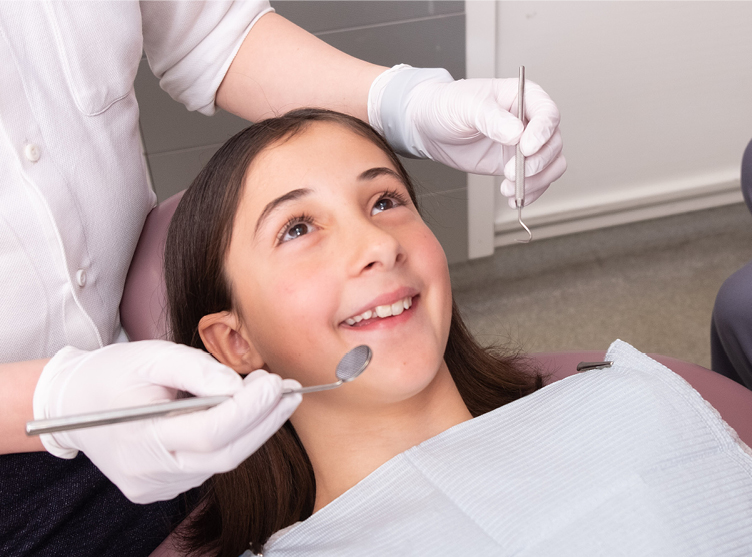What Does Legacy Orthodontics Do?
The Legacy Orthodontics Ideas
Table of ContentsThe 4-Minute Rule for Legacy Orthodontics4 Easy Facts About Legacy Orthodontics DescribedThe Single Strategy To Use For Legacy OrthodonticsThe smart Trick of Legacy Orthodontics That Nobody is Talking AboutGet This Report about Legacy Orthodontics
At Advanced Orthodontics, we provide individuals with a alternative therapy experience. On top of that, we provide adjustable therapy schedules, flexible settlement choices and an enjoyable, enjoyable experience. braces. Telephone call ( 480) 357-4900 today to learn more and timetable a consultation.An orthodontist is a dental professional trained to diagnose, prevent, and deal with teeth and jaw abnormalities. They fix existing problems and are trained to recognize issues that might establish in the future. Orthodontists collaborate with individuals of any ages, from kids to adults. People commonly connect an excellent smile with health.
Malocclusion, or misaligned teeth, can bring about oral issues, consisting of tooth decay, periodontal disease, and tough or painful eating. Not everyone is born with straight teeth. If you have a negative bite or huge areas between your teeth, you may wish to consult a dentist specializing in orthodontic treatment.
Legacy Orthodontics - Questions
( Picture Credit Score: DigitalVision/Getty Images) Orthodontists utilize taken care of and removable dental tools, like braces, retainers, and bands, to change the setting of teeth in your mouth. Orthodontic therapy is for oral irregularities, consisting of: Misaligned teethBite problems, like an overbite or an underbiteCrowded teeth or teeth that are also far apartJaw misalignmentThe objective of orthodontic therapy is to enhance your bite.
While you might assume of orthodontists as primarily for youngsters or teenagers that require braces, they can correct oral issues at any type of age. Orthodontists participate in university, oral school, and orthodontic school.
All orthodontists are dental practitioners, however not all dental experts are orthodontists. Orthodontic residency programs supply extensive, focused direction for dental experts. They concentrate on two locations: How to appropriately and safely relocate teeth Exactly how to correctly assist development in the teeth, jaw, and faceOnce an orthodontist has completed training, they have the option to become board licensed.
5 Easy Facts About Legacy Orthodontics Described
Misalignment, or malocclusion, is one of the most typical factor individuals see an orthodontist. It is genetic and is the result of size distinctions between the upper and lower jaw or in between the jaw and teeth. Malocclusion results in tooth congestion, a twisted jaw, or irregular bite patterns. Malocclusion is usually treated with: Your orthodontist affixes steel, ceramic, or plastic square bonds to your teeth.
Some individuals need a headgear to assist relocate teeth into line with pressure from outside the mouth. A retainer is a custom tool that maintains your teeth in area.
They can create additional room in the mouth without having to pull teeth. Orthodontists utilize cables, medical screws, or plates to sustain your jaw bone.
You may need to see an orthodontist if you have: Crowding or not adequate area for all of your teethOverbite, when your upper teeth come by your bottom teethUnderbite, when your base teeth are also much forwardSpacing or why not try this out issues with gapsCrossbite, which is when your top teeth fit behind your bottom teeth when your mouth is closedOpen bite or an upright gap in between your front bottom and top teethMisplaced midline, when the center of your bottom and top teeth do not line up Correcting a dental malocclusion can: Make attacking, eating, and speaking easierImprove the proportion of our face and your general appearanceEase discomfort from temporomandibular joint conditionsSeparate your teeth and make them less complicated to clean, helping prevent tooth degeneration or dental caries It's usually a dental professional that initially notifications misaligned teeth throughout a regular exam.
The Only Guide to Legacy Orthodontics

Throughout your initial orthodontic appointment, you'll likely have: An oral examPhotos taken of your face and smileDental X-raysPanoramic (360 level) X-rays of your face and headImpressions to produce mold and mildews of your teethThese examinations will assist your orthodontist recognize just how to wage your treatment. clear braces. An orthodontist is a dentist that's had training to treat your teeth and jaw
Orthodontists might execute surgery, exams,X-rays,and more to help you achieve an extra comfortable, much healthier smile. An orthodontist is focused on your bite, so something like a broken tooth would be taken care of by a dental expert. Orthodontists are dental professionals yet not all dental professionals are orthodontists. Orthodontists are concentrated on your bite, or the way your teeth meshed, and the straightness of your teeth.
Ever before asked yourself exactly how stars constantly appear to have completely straightened teeth? The response typically exists in the skilled hands of an orthodontist. What exactly does an orthodontist do? Orthodontists are dental specialists who focus on dealing with irregularities in the teeth and jaws. Their expertise surpasses simply developing a gorgeous smile; it reaches improving your total dental health and wellness and function.
Legacy Orthodontics Things To Know Before You Get This

While dental braces are the most commonly recognized orthodontic therapy, orthodontists have a diverse toolkit at their disposal. The specific approach picked depends on the extent of the situation, the person's age, and private preferences. These tried-and-true dental braces make use of a system of braces bonded to the teeth and connected by wires.
Clear aligners, like Invisalign, are a popular alternative for people seeking a more very discreet therapy option. These detachable trays are customized to considerably change the teeth's setting. Headgear may be used combined with dental braces or aligners to apply additional targeted forces, specifically for fixing jaw discrepancies. In instances of narrow jaws, palatal expanders can be used to create space for proper tooth positioning.